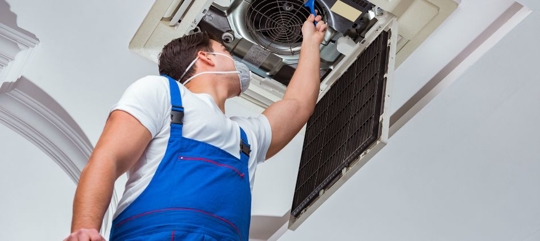Send us an email
Please enter your name and contact info.
Please enter your name and contact info.
Call Us Today! (850) 748-1066

Serving Families Throughout Pensacola

The quality of the air we breathe indoors is often overlooked but poses significant health risks if not managed properly. Indoor air quality refers to the air quality within and around buildings and structures, particularly as it relates to the health and comfort of the occupants. This article aims to provide a comprehensive guide on how to improve indoor air quality, thus enhancing your health, productivity, and overall well-being.
Poor indoor air quality has been linked to a range of health issues, from minor irritations like allergies and fatigue to serious conditions such as respiratory diseases, heart disease, and even cancer. Indoor air pollutants can come from many sources such as dust, smoke, mold, pet dander, pollen, and bacteria. Other pollutants include chemical pollutants from household cleaning products, building materials off-gassing, and Volatile Organic Compounds (VOCs).
Exposure to poor indoor air quality can lead to a range of health effects, which can be immediate or delayed. Immediate effects often include irritation of the eyes, nose, and throat, headaches, dizziness, and fatigue. Over time, these pollutants can exacerbate or even cause respiratory diseases, heart disease, and cancer. Children, the elderly, and people with existing health conditions are particularly vulnerable.
Different organizations such as the World Health Organization (WHO), Environmental Protection Agency (EPA), and Occupational Safety and Health Administration (OSHA) have set standards for indoor air quality. Understanding these standards, and how they apply to common pollutants, can help guide your efforts to improve indoor air quality.
Air quality testing is the first step toward improving indoor air quality. There are several ways to do this, from professional testing services to home testing kits and indoor air quality monitors. Regular testing can help identify the specific pollutants in your home and guide your efforts to improve air quality.
One of the simplest ways to improve indoor air quality is to increase ventilation. This means bringing in fresh outdoor air and removing stale indoor air. Strategies for increasing ventilation can include everything from opening windows and doors to using mechanical ventilation systems. The latter is particularly beneficial as it can control humidity levels, thus preventing the growth of mold and dust mites.
Investing in air purification technologies can significantly improve indoor air quality. These technologies can range from air purifiers with High-Efficiency Particulate Air (HEPA) filters, and activated carbon filters, to Ultraviolet Germicidal Irradiation (UVGI) systems. Air purifiers can remove pollutants such as dust, pet dander, and smoke from the air. They can be particularly beneficial for people with allergies or asthma.
This involves capturing pollutants by physical barriers, such as filters or membranes, that have pores or openings smaller than the pollutant size. The most common type of filter is the high-efficiency particulate air (HEPA) filter, which can remove 99.97% of particles that are 0.3 micrometers or larger.
This involves killing or inactivating microorganisms by exposing them to ultraviolet (UV) light, which can damage their DNA and prevent them from reproducing. UV disinfection is usually combined with filtration to remove dead microorganisms from the air.
Regular cleaning and maintenance of your home and HVAC system are essential for maintaining good indoor air quality. This includes tasks like regular dusting, vacuum cleaning, washing fabrics, keeping the kitchen and bathrooms clean and mold-free, and having your HVAC system serviced regularly.
Improving indoor air quality is essential for our health and well-being. It involves understanding the sources of indoor air pollution, monitoring indoor air quality, and taking practical steps to reduce pollutants. By following the strategies outlined in this guide, you can ensure a healthier and more comfortable living environment for you and your family.
Remember, every step taken towards improving indoor air quality is a step towards better health and well-being.
The post Unmasking the Invisible: A Comprehensive Guide to Improving Indoor Air Quality appeared first on Diamond Air Design.